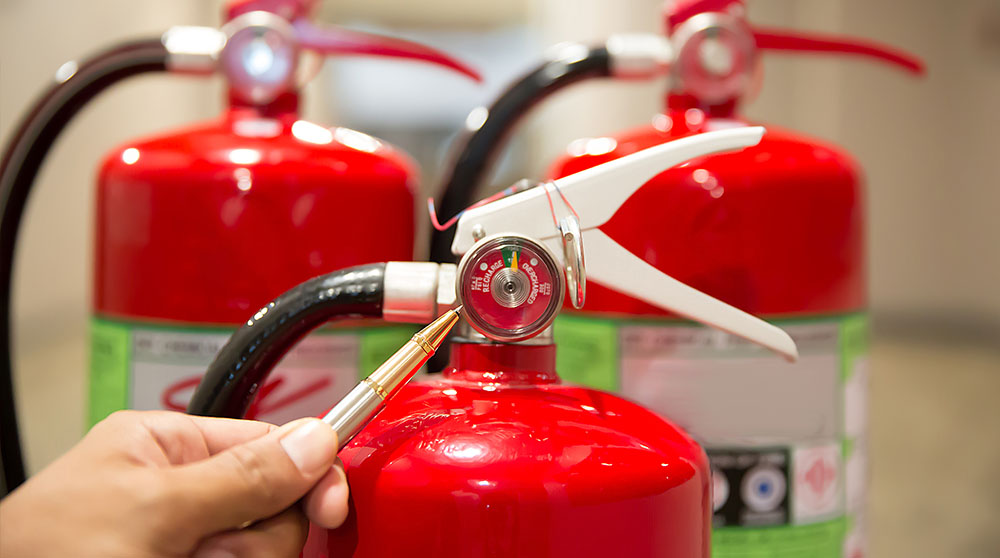The good news? Most people have a fire extinguisher in their home or business. But the bad news is they’ve probably never used it. Many have never come face to face with a fire (which is good news, too). But it means they might not know how to handle one.
To test how important fire extinguishers truly are, the National Association of Fire Equipment Distributors did a study on their effectiveness. Surveys over a 34-year period showed fire extinguishers were effective 95% of the time, so long as they were easily accessible and understandable.
To explore more about fire extinguishers, read on.
What kind of fire extinguisher should I have?
Because there are different types of fires, there are different types of fire extinguishers.
In the U.S., our classification system is:
| CLASS | FOR USE WITH |
| A | Ordinary materials (cloth, wood, paper products) |
| B | Combustible and flammable liquids (grease, gasoline, oil) |
| C | Electrical equipment (appliances, tools, etc.) |
| D | Flammable metals |
| K | Cooking fires (vegetable oils, animal oils, fats) |
For your convenience, most fire extinguishers meant for homes and businesses are classified as a combination: Class ABC. And that’s all you need. However, if you’re working in a factory or commercial kitchen, you’d want Class D or Class K – respectively.
How many fire extinguishers should I have?
At the very least, you should have one ABC fire extinguisher on every level of your home. Even in the basement. As you’re deciding where to store them, think strategically. Where is a fire most likely to start? Most experts recommend keeping your first-floor fire extinguisher in your kitchen, while also having one in your garage. Second-story fire extinguishers may be best kept in your master bedroom/bathroom or a linen closet close in proximity. (That way they’re easily accessible to adults.) Finally, it may be beneficial to have one near your water heater and/or washer and dryer.
When it comes to your business, similar rules apply. For safety’s sake, you’ll want a fire extinguisher on every level of your building. And you’ll want every employee to know where they’re stored. The United States Department of Labor also recommends providing a training program for new employees, as well as an annual session for existing employees.
How do I use a fire extinguisher?
First things first, it’s important to remember fire extinguishers are for small fires. Attempt to extinguish a fire only if the flames are contained and are shorter than you.
If you are faced with a small fire, it’s important to evacuate everyone who’s inside. Then, call the fire department (even if you feel confident in your ability to extinguish it). Once you’ve taken these precautions, stand eight to 12 feet from the fire and practice the PASS method.
P = Pull the pin. Release the locking mechanism.
A = Aim low. Point the nozzle at the base of the flames.
S = Squeeze the trigger. Start slowly and evenly.
S = Sweep the hose. Move the nozzle from left to right.
After the fire is extinguished, back away from the flames. Watch closely to see if it will ignite again. (Here’s where it’s helpful to have first called the fire department!) But if the extinguisher empties too early (most last 10 seconds), evacuate immediately.
Do fire extinguishers expire?
To get the details, we consulted Kidde, one of the world’s largest manufacturers of fire safety products. According to the experts, rechargeable fire extinguishers must be recharged every 10 years. Meanwhile, disposable fire extinguishers must be replaced every 12 years.
Businesses are required to have an annual maintenance check on all fire extinguishers and fire safety procedures. So be sure all employees are aware of where the extinguishers are located and that they know the evacuation plan.
Want to find more information about fire safety? We’ve got you covered. Discover the 14 fire hazards hiding in your home and how to avoid them or get a fire safety checklist for your small business.


